Discover 35 hidden attractions, cool sights, and unusual things to do in Munich (Germany). Don't miss out on these must-see attractions: Nymphenburg Palace, Olympiapark, and Deutsches Museum. Also, be sure to include Englischer Garten in your itinerary.
Below, you can find the list of the most amazing places you should visit in Munich (Bavaria).
Table of Contents
Nymphenburg Palace
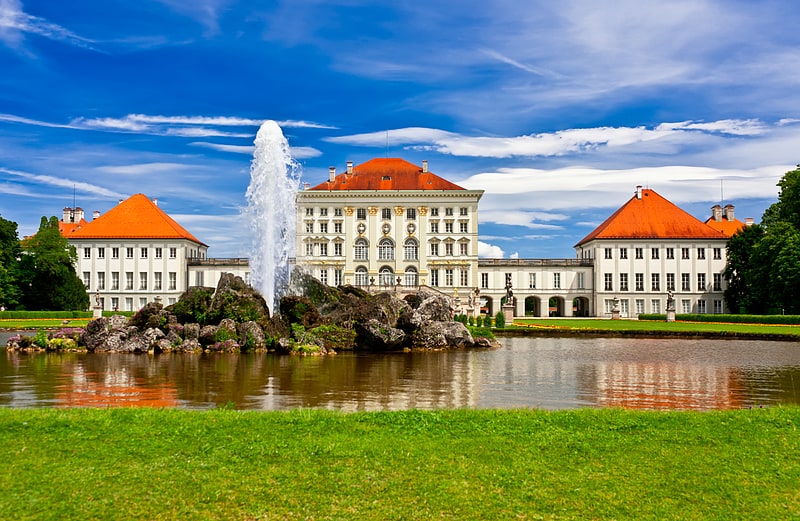
Also known as: Schloss Nymphenburg
Regal 18th-century palace and coach museum. The Nymphenburg Palace is a Baroque palace situated in Munich's western district Neuhausen-Nymphenburg, in Bavaria, southern Germany. Combined with the adjacent Nymphenburg Palace Park it constitutes one of the premier royal palaces of Europe. Its frontal width of 632 m even surpasses Versailles Palace. The Nymphenburg served as the main summer residence for the former rulers of Bavaria of the House of Wittelsbach.[1]
Address: Schloß Nymphenburg 1, 80638 München (Neuhausen - Nymphenburg)
Olympiapark
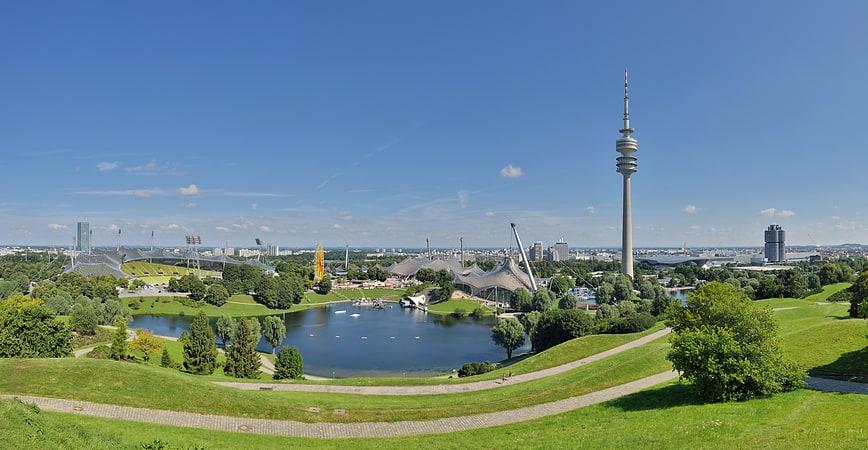
Olympic stadium with tours and attractions. The Olympiapark in Munich, Germany, is an Olympic Park which was constructed for the 1972 Summer Olympics. Located in the Oberwiesenfeld neighborhood of Munich, the Park continues to serve as a venue for cultural, social, and religious events, such as events of worship. It includes a contemporary carillon. The Park is administered by Olympiapark München GmbH, a holding company fully owned by the state capital of Munich.[2]
Address: Spiridon-Louis-Ring 21, 80809 München (Neuhausen - Nymphenburg)
Deutsches Museum

Exhibitions on science and technology. The Deutsches Museum in Munich, Germany, is the world's largest museum of science and technology, with about 28,000 exhibited objects from 50 fields of science and technology. It receives about 1.5 million visitors per year.
The museum was founded on 28 June 1903, at a meeting of the Association of German Engineers (VDI) as an initiative of Oskar von Miller. It is the largest museum in Munich. For a period of time the museum was used to host pop and rock concerts including The Who, Jimi Hendrix and Elton John.[3]
Address: Museumsinsel 1, 80538 München (Ludwigsvorstadt - Isarvorstadt)
Englischer Garten

Huge urban park with a beer garden. The Englischer Garten is a large public park in the centre of Munich, Bavaria, stretching from the city centre to the northeastern city limits. It was created in 1789 by Sir Benjamin Thompson, later Count Rumford, for Prince Charles Theodore, Elector of Bavaria. Thompson's successors, Reinhard von Werneck and Friedrich Ludwig von Sckell, advisers on the project from its beginning, both extended and improved the park.
With an area of 3.7 km2 (1.4 sq mi) (370 ha or 910 acres), the Englischer Garten is one of the world's largest urban public parks. The name refers to its English garden form of informal landscape, a style popular in England from the mid-18th century to the early 19th century and particularly associated with Capability Brown.[4]
Nymphenburg Palace Park
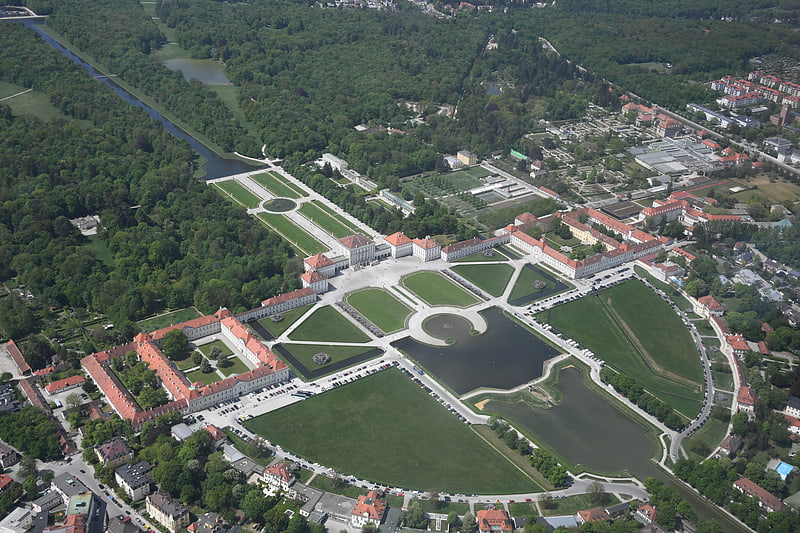
Park in Munich, Germany. The Nymphenburg Palace Park ranks among the finest and most important examples of garden design in Germany. In combination with the palace buildings, the Grand circle entrance structures and the expansive park landscape form the ensemble of the Nymphenburg Summer Residence of Bavarian dukes and kings, located in the modern Munich Neuhausen-Nymphenburg borough. The site is a Listed Monument, a Protected Landscape and to a great extent a Natura2000 area.
The exquisite composition of formal garden elements and English-style country park is considered a masterpiece of garden design and the spacious complex of palace and park has always been a popular attraction for local residents and tourists alike. To the east the park adjoins the palace buildings and the Grand circle. To the south and west the park is largely enclosed by the original Garden wall and borders the Botanical Garden to the north and beyond Menzinger Straße the park peripherie partly merges with the Kapuzinerhölzl forest.
The designs of the original Baroque gardens had largely been modeled on the French gardens at Vaux-le-Vicomte and Versailles. The modern park layout is the result of a fundamental redesign by Friedrich Ludwig Sckell, beginning in 1799. The park area within the Garden wall occupies 180 hectares and the complete complex covers 229 hectares.[5]
BMW Museum
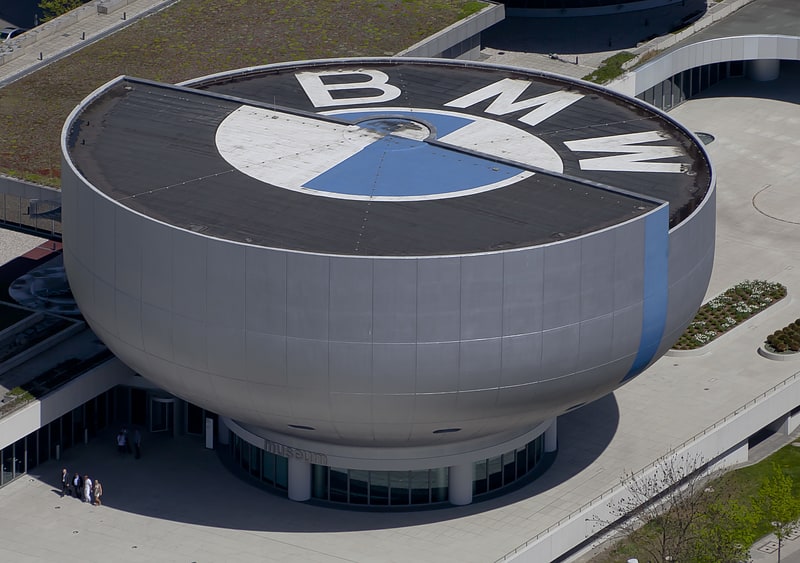
Space-age steel venue with cars and bikes. The BMW Museum is an automobile museum of BMW history located near the Olympiapark in Munich, Germany. The museum was established in 1973, shortly after the Summer Olympics opened. From 2004 to 2008, it was renovated in connection with the construction of the BMW Welt, directly opposite. The museum reopened on 21 June 2008. At the moment the exhibition space is 5,000 square metres for the presentation of about 120 exhibits.[6]
Address: Am Olympiapark 2, 80809 München (Milbertshofen-Am Hart)
Karlsplatz
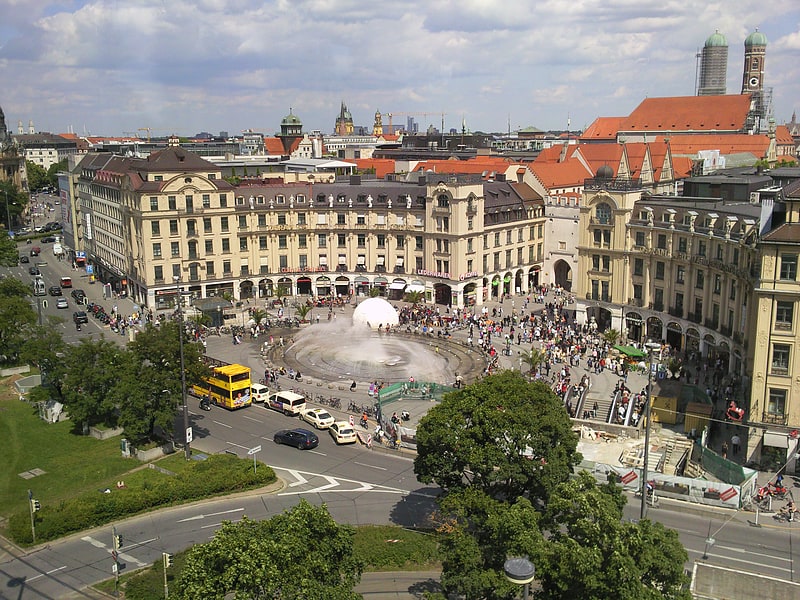
Also known as: Stachus
Historical square with a fountain. Stachus is a large square in central Munich, southern Germany. The square was officially named Karlsplatz in 1797 after the unpopular Charles Theodore, Elector of Bavaria. Munich natives seldom use that name, calling the square instead Stachus, after the pub Beim Stachus, once owned by Eustachius Föderl, that was located there until construction work for Karlsplatz began. Even the U-Bahn and S-Bahn announcements use the unofficial name.[7]
Address: Karlspl. 1, 80335 München (Maxvorstadt)
Munich Residenz
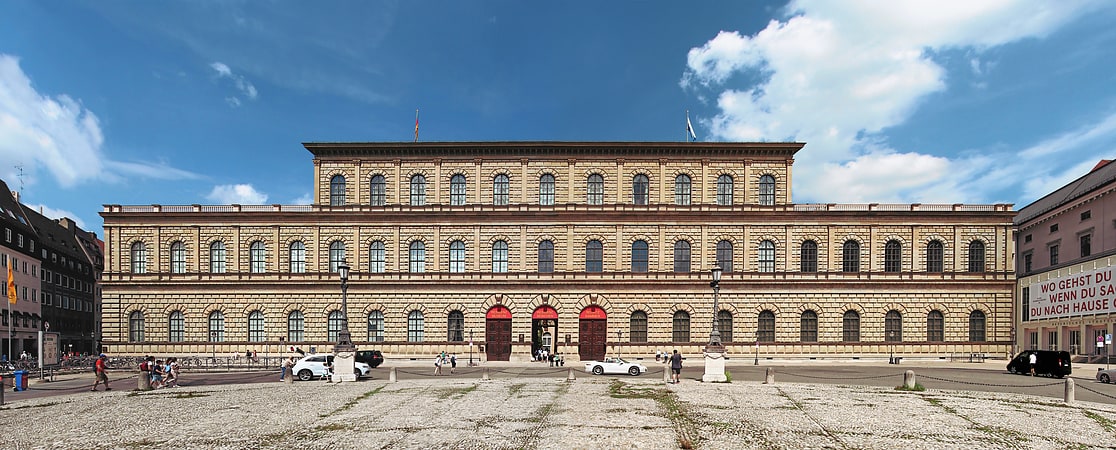
Also known as: Münchner Residenz
Museum complex in an old royal residence. The Residenz in central Munich is the former royal palace of the Wittelsbach monarchs of Bavaria. The Residenz is the largest city palace in Germany and is today open to visitors for its architecture, room decorations, and displays from the former royal collections.
The complex of buildings contains ten courtyards and displays 130 rooms. The three main parts are the Königsbau (near the Max-Joseph-Platz), the Alte Residenz (Old Residenz; towards the Residenzstraße) and the Festsaalbau (towards the Hofgarten). A wing of the Festsaalbau contains the Cuvilliés Theatre since the reconstruction of the Residenz after World War II. It also houses the Herkulessaal (Hercules Hall), the primary concert venue for the Bavarian Radio Symphony Orchestra. The Byzantine Court Church of All Saints (Allerheiligen-Hofkirche) at the east side is facing the Marstall, the building for the former Court Riding School and the royal stables.[8]
Address: Residenzstraße 1, 80333 München (Altstadt - Lehel)
Theresienwiese
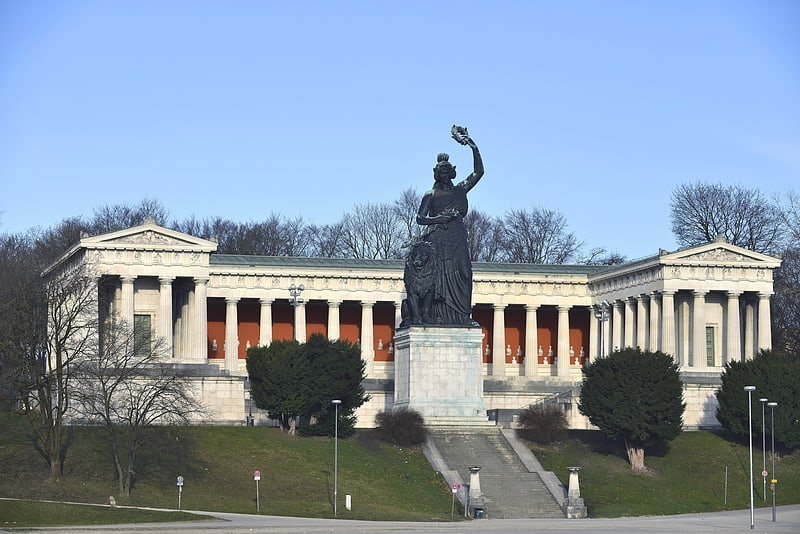
Fairground in Munich, Germany. Theresienwiese is an open space in the Munich borough of Ludwigsvorstadt-Isarvorstadt. It serves as the official ground of the Munich Oktoberfest. A space of 420,000 square metres, it is bordered in the west by the Ruhmeshalle and the Bavaria statue, symbolizing the State of Bavaria, and in the east by Esperantoplatz, a square named for the international language Esperanto. There, a memorial commemorates the victims of the 1980 Oktoberfest bombing. Bavariaring, an orbital road, provides access to visiting traffic. In the north the towers of the Paulskirche are visible.[9]
Alte Pinakothek
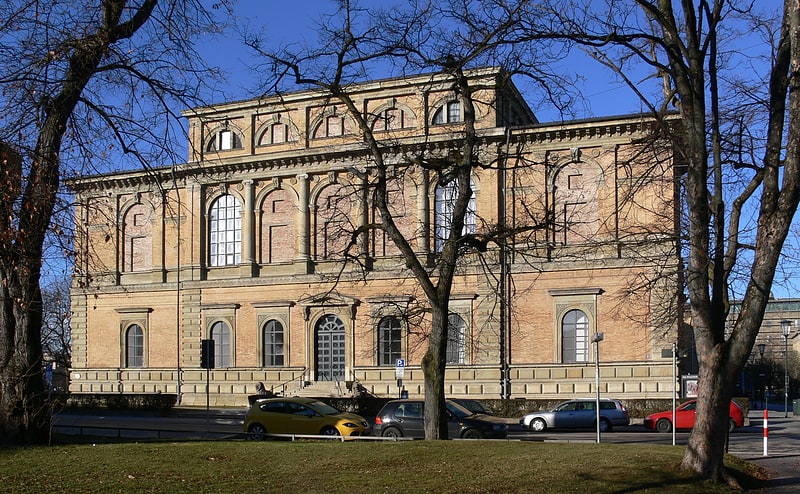
Museum displaying major European art. The Alte Pinakothek is an art museum located in the Kunstareal area in Munich, Germany. It is one of the oldest galleries in the world and houses a significant collection of Old Master paintings. The name Alte Pinakothek refers to the time period covered by the collection—from the fourteenth to the eighteenth century. The Neue Pinakothek, re-built in 1981, covers nineteenth-century art, and Pinakothek der Moderne, opened in 2002, exhibits modern art. All three galleries are part of the Bavarian State Painting Collections, an organization of the Free state of Bavaria.[10]
Address: Barer Str. 27, 80333 München (Maxvorstadt)
BMW Welt

Museum in Munich, Germany. The BMW Welt is a combined exhibition, delivery, adventure museum, and event venue located in Munich's district Am Riesenfeld, next to the Olympic Park, in the immediate vicinity of the BMW Headquarters and factory. It was built from August 2003 to summer 2007. A solar system with 800 kW of power is installed on the roof of the main building. The opening took place on 17 October 2007. The BMW Welt is the most visited tourist attraction in Bavaria.[11]
Address: Am Olympiapark 1, 80809 Munich (Milbertshofen-Am Hart)
Tierpark Hellabrunn
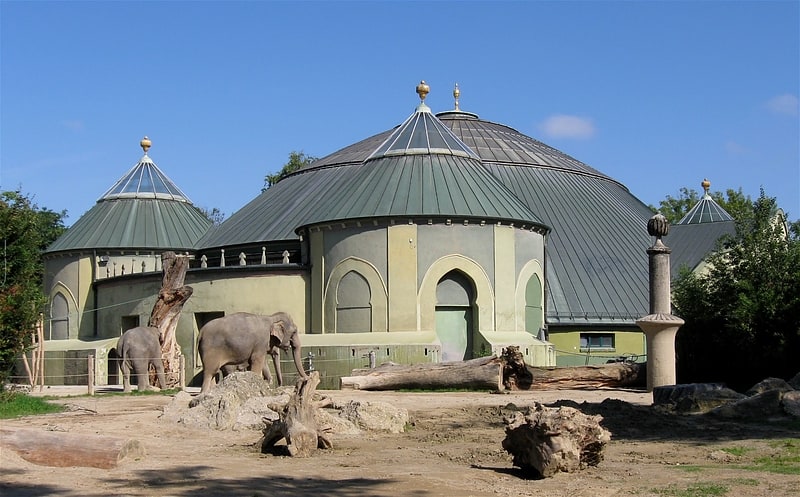
Established nature reserve–style zoo. Hellabrunn Zoo is a 40 hectare zoological garden in the Bavarian capital of Munich. The zoo is situated on the right bank of the river Isar, in the southern part of Munich near the quarter of Thalkirchen.
A high ratio of enclosures are cageless, relying upon moat features to keep the animals in place. The zoo was the first zoo in the world not organized by species, but also by geographical aspects. For example, the wood bison share their enclosure with prairie dogs.
In 2013, the zoo was ranked the fourth best zoo in Europe (up from 12th). It focuses on conservation and captive breeding rare species such as the rare drill and silvery gibbons. Also gorillas, giraffes, elephants, wood bisons, elk and Arctic foxes were successfully bred in the zoo, which houses many species. It is one of the very few zoos that allows visitors to bring dogs.
Tierpark Hellabrunn is a member of the European Association of Zoos and Aquaria (EAZA) and the World Association of Zoos and Aquariums (WAZA) and participates in the European Endangered Species Programme (EEP).[12]
Address: Tierparkstraße 30, 81543 München (Untergiesing-Harlaching)
Botanical Garden Munich-Nymphenburg
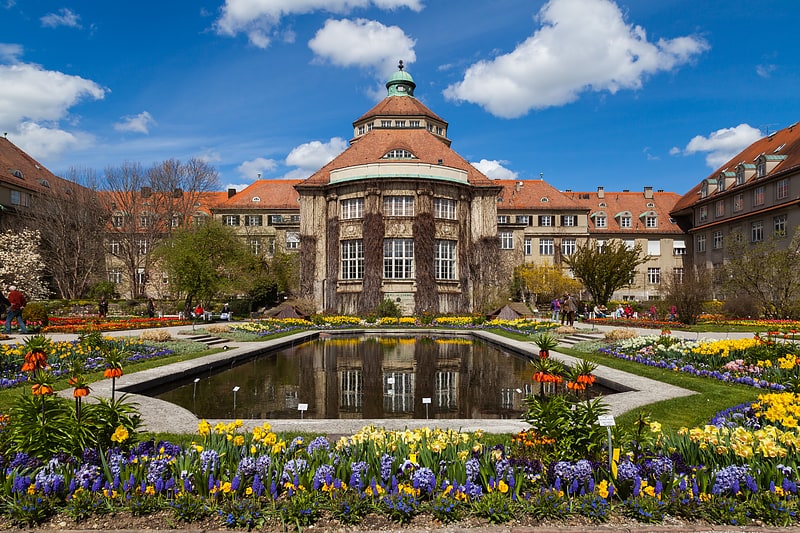
Also known as: Botanischer Garten München-Nymphenburg
Sizable, scenic place with greenhouses. The Botanischer Garten München-Nymphenburg is a botanical garden and arboretum located at Menzinger Str. 65, Munich, Bavaria, Germany. It is open daily, except on 24 and 31 December; an admission fee is charged.[13]
Address: Menzinger Str. 65, 80638 München (Neuhausen - Nymphenburg)
Frauenkirche

Gothic church with iconic domed towers. The Frauenkirche is a church in Munich, Bavaria, Germany, that serves as the cathedral of the Archdiocese of Munich and Freising and seat of its Archbishop. It is a landmark and is considered a symbol of the Bavarian capital city. Although called "Münchner Dom" on its website and URL, the church is referred to as "Frauenkirche" by locals.
Because of local height limits, the church towers are widely visible. As a result of the narrow outcome of a local plebiscite, city administration prohibits buildings with a height exceeding 99 m in the city center. Since November 2004, this prohibition has been provisionally extended outward, and consequently, no buildings may be built in the city over the aforementioned height. The south tower, which is normally open to those wishing to climb the stairs, will offer a unique view of Munich and the nearby Alps after its current renovation is completed.[14]
Address: Frauenplatz 12, 80331 München (Altstadt - Lehel)
Mariensäule
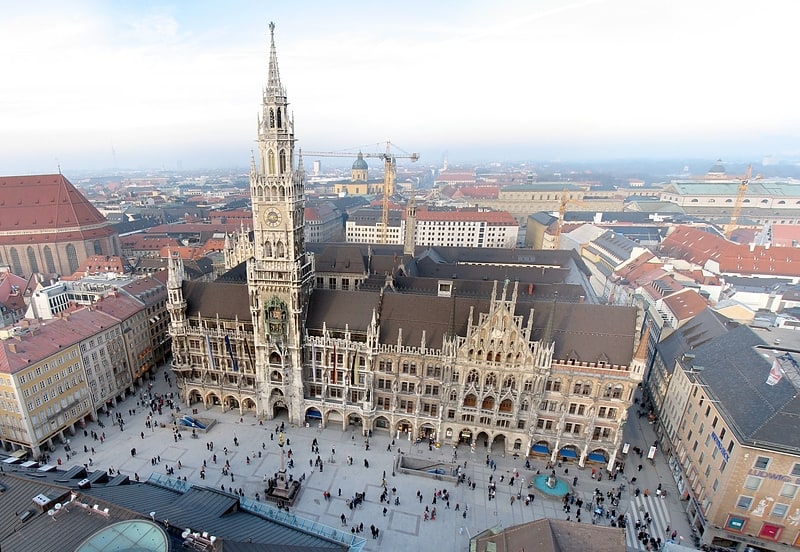
Also known as: Marienplatz
Central square and landmark buildings. Marienplatz is a central square in the city centre of Munich, Germany. It has been the city's main square since 1158.[15]
Bavaria
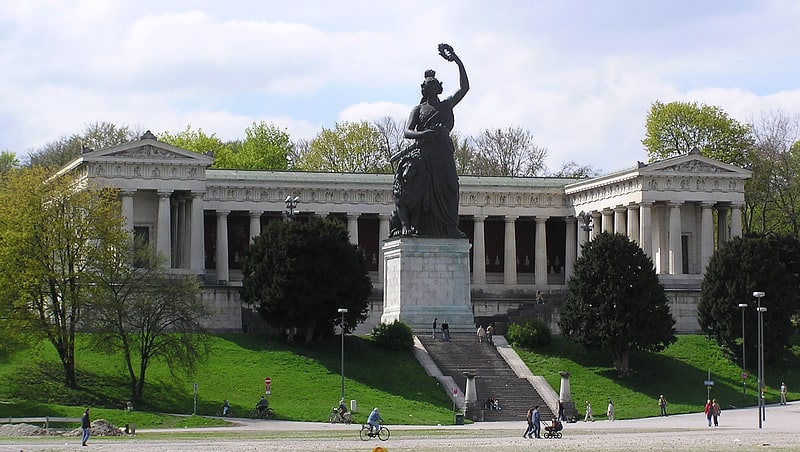
1800s bronze representation of Bavaria. Bavaria is the name given to a monumental, bronze sand-cast 19th-century statue in Munich, southern Germany. It is a female personification of the Bavarian homeland, and by extension its strength and glory.
The statue is part of an ensemble which also includes a hall of fame (Ruhmeshalle) and a stairway. It was commissioned by Ludwig I of Bavaria, with the specific design being chosen by competition. It was cast at the Munich foundry of J.B. Stiglmair between 1844 and 1850 and is the first colossal statue since Classical Antiquity to consist entirely of cast bronze. It was and is up to the present day considered a technological masterpiece. Because of its size it had to be produced in several parts; it is 18.52 metres (60 ft. 9 in.) high and weighs about 87.36 tons. It rests on a stone base which is 8.92 (28 ft.) metres high.
An internal circular staircase leads up to a platform in the head, where four openings in the helmet provide a view of the Theresienwiese and downtown Munich.[16]
Address: Theresienhöhe 16, 80339 München (Ludwigsvorstadt - Isarvorstadt)
Olympiaturm
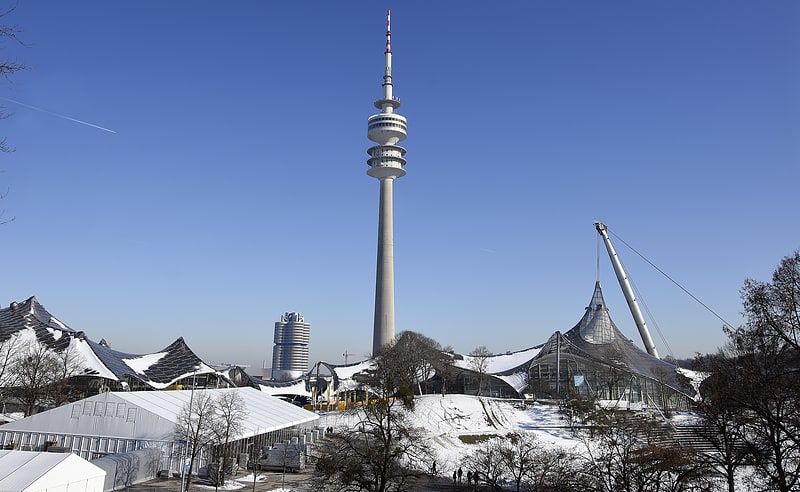
Historic entertainment and sports venue. The Olympic Tower in the Olympic Park, Munich has an overall height of 291 m and a weight of 52,500 tons. At a height of 190 m there is an observation platform as well as a small rock and roll museum housing various memorabilia, which is signposted as "Rock Museum" outside the entrance. Since its opening in 1968, the tower has registered over 35 million visitors. At a height of 182 m there is a revolving restaurant, which seats 230 people. A full revolution takes 53 minutes. The tower also serves as a broadcast tower, and has one Deutsche Telekom maintenance elevator with a speed of 4 m/s, as well as two visitor lifts with a speed of 7 m/s which have a capacity of about 30 people per car. The travel time is about 30 seconds. The tower is open daily from 09:00 to 24:00. By the end of 2018, over 43 million visitors have climbed the tower since its opening in 1968.
There is a concept of making Virtual Reality weather timelapse service from Olympiaturm. In case it were implemented, it would become the first tower worldwide with such function.[17]
Address: Spiridon-Louis-Ring 7, 80809 Munich (Milbertshofen-Am Hart)
Neue Pinakothek
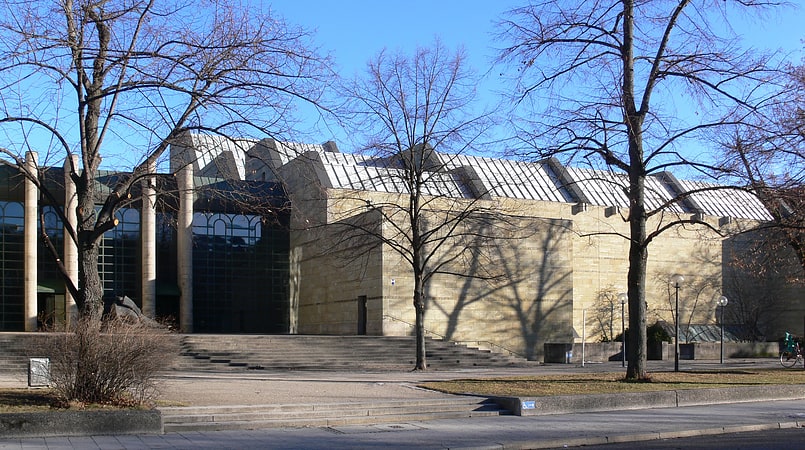
Museum in Munich, Germany. The Neue Pinakothek is an art museum in Munich, Germany. Its focus is European Art of the 18th and 19th centuries, and it is one of the most important museums of art of the nineteenth century in the world. Together with the Alte Pinakothek and the Pinakothek der Moderne, it is part of Munich's "Kunstareal".[18]
Address: Barer Str. 29, 80799 München (Maxvorstadt)
Allianz Arena
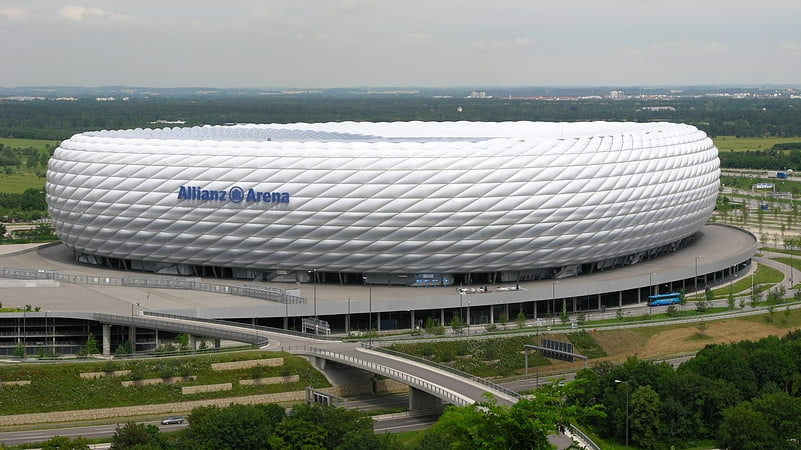
Home ground for FC Bayern Munich. Allianz Arena is a football stadium in Munich, Bavaria, Germany with a 70,000 seating capacity for international matches and 75,000 for domestic matches. Widely known for its exterior of inflated ETFE plastic panels, it is the first stadium in the world with a full colour changing exterior. Located at 25 Werner-Heisenberg-Allee at the northern edge of Munich's Schwabing-Freimann borough on the Fröttmaning Heath, it is the second-largest arena in Germany behind Westfalenstadion in Dortmund.
FC Bayern Munich has played its home games at the Allianz Arena since the start of the 2005–06 season. The club had previously played their home games at the Munich Olympic Stadium since 1972. 1860 Munich previously had a 50 per cent share in the stadium, but Bayern Munich purchased their shares for €11 million in April 2006 due to 1860 Munich suffering from financial issues. The arrangement allowed 1860 Munich to play at the stadium while retaining no ownership until 2025. However, in July 2017 Bayern terminated the rental contract with 1860, making themselves the sole tenants of the stadium.
The large locally based financial services provider Allianz purchased the naming rights to the stadium for 30 years. However, this name cannot be used when hosting FIFA and UEFA events, since these governing bodies have policies forbidding corporate sponsorship from companies that are not official tournament partners. During the 2006 FIFA World Cup, the stadium was referred to as FIFA WM-Stadion München (FIFA World Cup Stadium, Munich). In UEFA club and Nations League matches, it is known as the Fußball Arena München (Football Arena Munich), and it hosted the 2012 UEFA Champions League Final and will host the upcoming 2025 final, moved from 2023. Since 2012 the museum of Bayern Munich, FC Bayern Erlebniswelt, has been located inside the Allianz Arena.
On 9 February 2022 it was announced that the Allianz Arena will host a regular-season game of the 2022 NFL Season as part of the NFL International Series. This will be the first ever National Football League game played in Germany. A future, second game at the venue has also been confirmed.[19]
Address: Werner-Heisenberg-Allee 25, 80939 Munich (Schwabing - Freimann)
Neues Rathaus
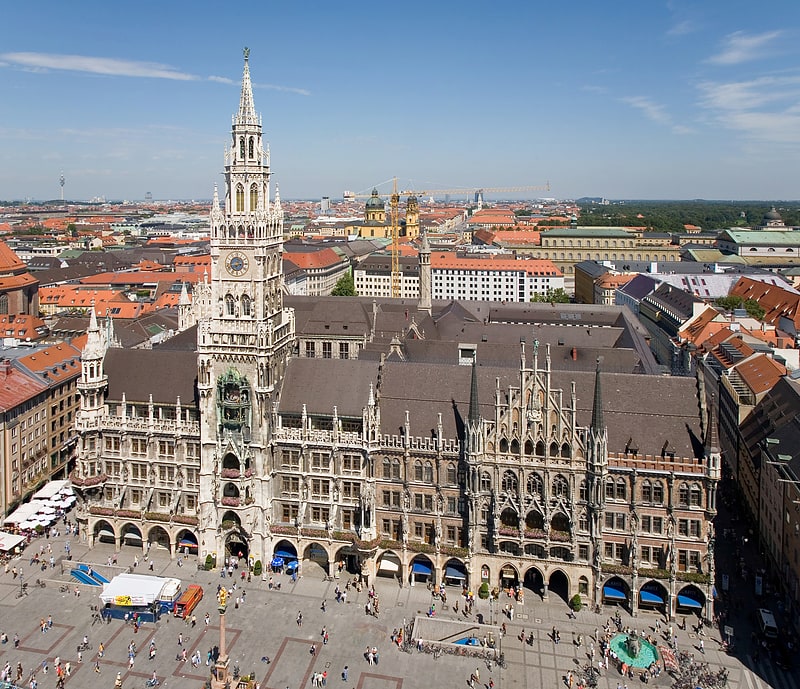
Neo-Gothic town hall with 85m tower. The New Town Hall is a town hall at the northern part of Marienplatz in Munich, Bavaria, Germany. It hosts the city government including the city council, offices of the mayors and a small portion of the administration. In 1874 the municipality had left the Old Town Hall for its new domicile.[20]
Address: Marienplatz 8, 80331 München (Altstadt - Lehel)
Feilitzschstraße
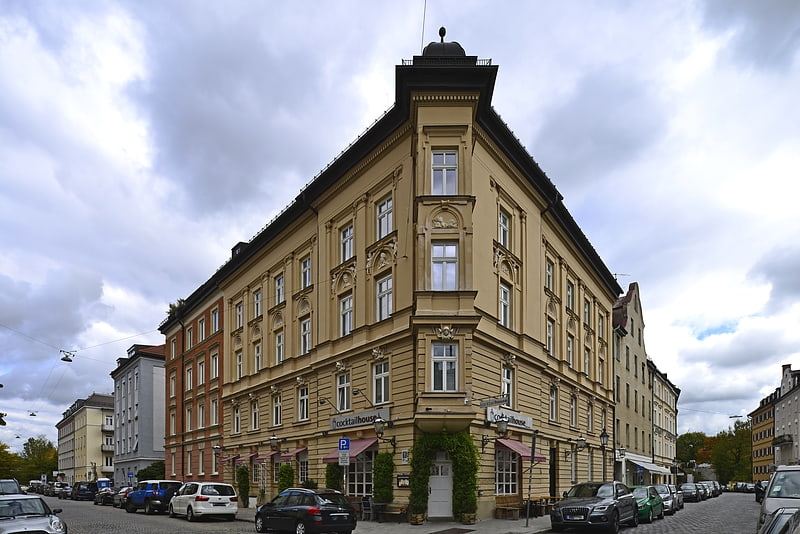
Street in Munich, Germany. The Feilitzschstraße is a roughly 450-meter-long street in Munich's Schwabing district. After the incorporation of Schwabing to Munich in 1891, it was renamed after the Bavarian State Interior Minister, Maximilian von Feilitzsch in order to avoid confusion with the Maffeistraße in the old town.[21]
Glyptothek
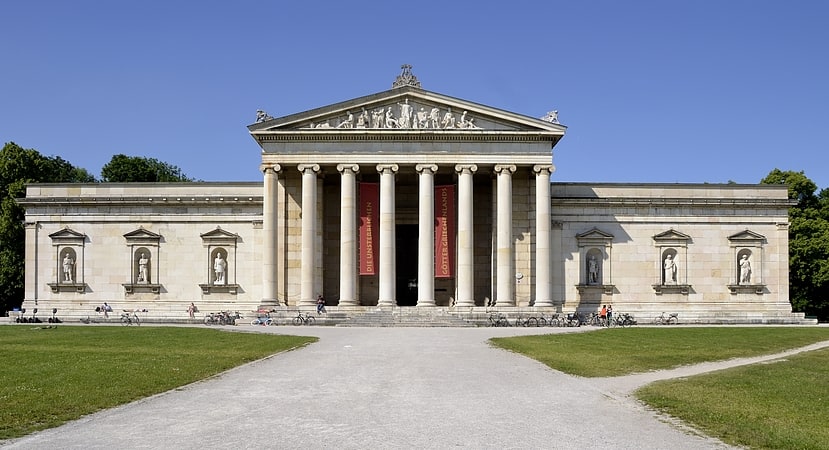
Museum of Greek and Roman sculpture. The Glyptothek is a museum in Munich, Germany, which was commissioned by the Bavarian King Ludwig I to house his collection of Greek and Roman sculptures. It was designed by Leo von Klenze in the neoclassical style, and built from 1816 to 1830. Today the museum is a part of the Kunstareal.[22]
Address: Königsplatz 3, 80333 München (Maxvorstadt)
Platzl
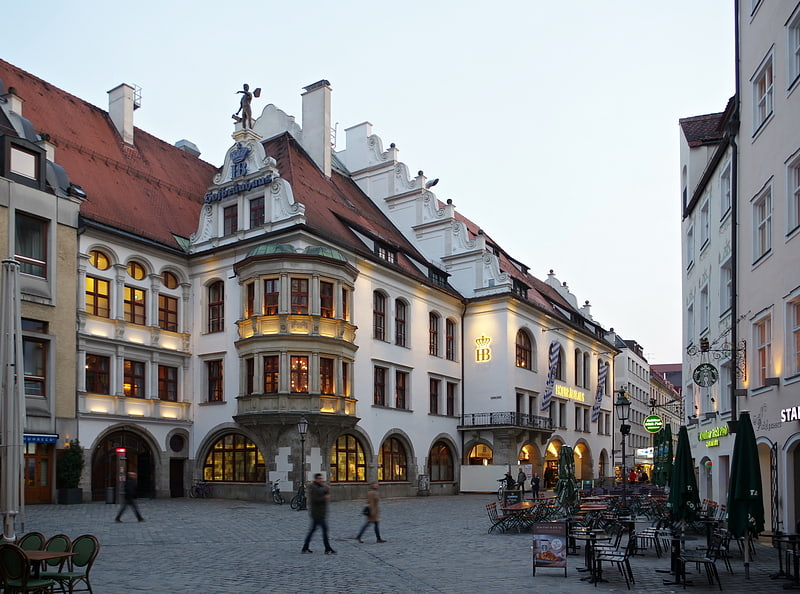
The Platzl is a public square in Munich, Germany, at which multiple notable buildings reside or resided, such as the eponymous theater and the Hofbräuhaus am Platzl.
The square was first mentioned on maps by its current name in 1780; previously, it was known only as the "Graggenau" quarter. In the nineteenth century, first the white beer and then the brown beer brewing operations of the Hofbräuhaus brewery were moved to the Platzl. With the later addition of the "Bockbierkeller", the Platzl became the center of Munich beer drinkers.
In 1874, a theater-restaurant moved in across the Hofbräuhaus am Platzl which by 1906 became known as the "Platzl Bühne" ("Stage at the Platzl") theater, marking the beginning of the Platzl as one of Munich's entertainment districts.[23]
Museum Brandhorst
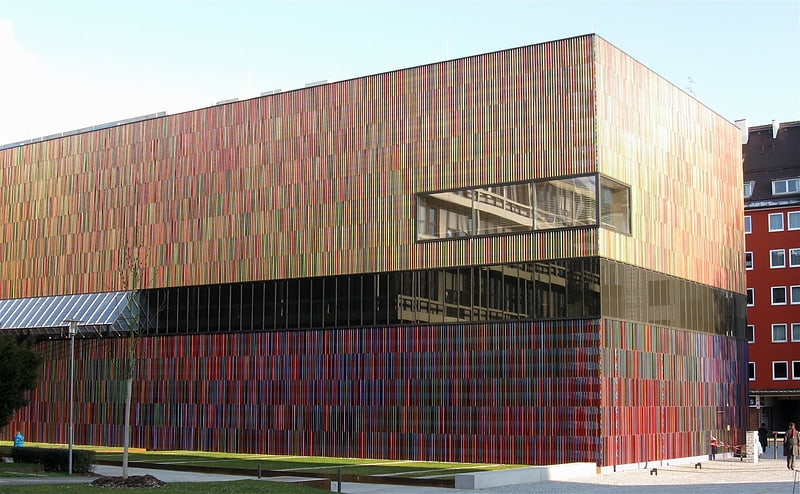
Modern art from Miró to Warhol. The Brandhorst Museum was opened in Munich on 21 May 2009. It displays about 200 exhibits from collection of modern art of the heirs of the Henkel trust Udo and Anette Brandhorst. In 2009 the Brandhorst Collection comprises more than 700 works.[24]
Address: Munich, Theresienstraße 35a, D 80333 München
Dianatempel
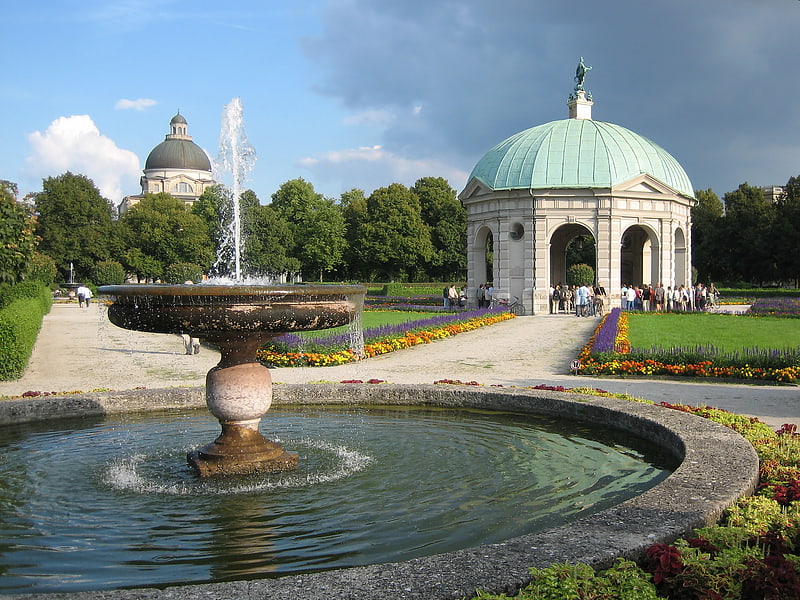
Historical landmark in Munich, Germany. The Diana Temple in the Munich Hofgarten, the garden of the Munich Residenz, is a twelve-sided gazebo from the Renaissance period with eight open and four closed round arcades. It is the crossing point of the main and diagonal axes of the Hofgarten.[25]
Pinakothek der Moderne

Huge museum of 19th- and 20th-century art. The Pinakothek der Moderne is a modern art museum, situated in central Munich's Kunstareal. Locals sometimes refer to it as the Dritte Pinakothek after the Old and New. It is one of the world's largest museums for modern and contemporary art.[26]
Address: Barer Str. 40, 80333 München (Maxvorstadt)
Fischbrunnen

Fountain in Munich, Germany. The Fischbrunnen is a fountain in the center of Munich, whose history can be traced back to the Middle Ages. In 1954, Josef Henselmann created the fountain in its present form, using parts of Konrad Knoll’s neo-gothic fountain that was destroyed during the Second World War.[27]
Deutsches Jagd- und Fischereimuseum
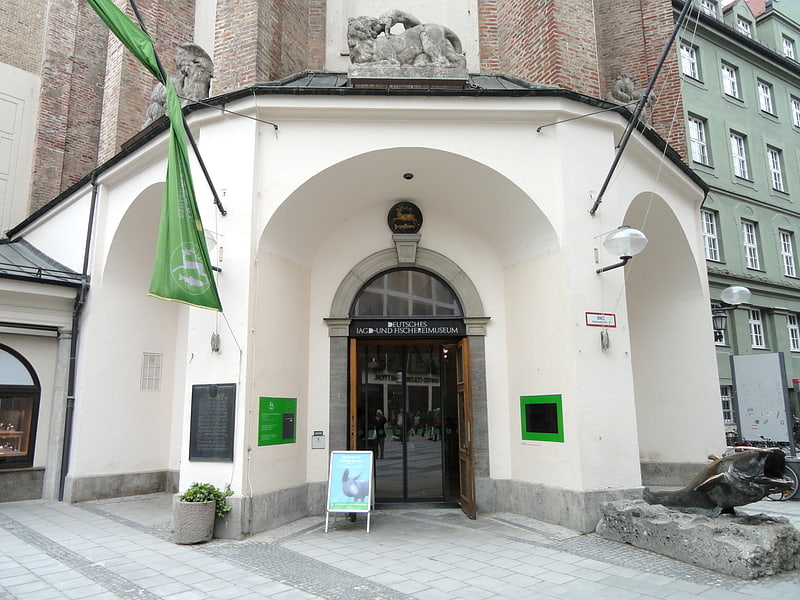
Museum in Munich, Germany. The German Hunting and Fishing Museum is a museum exhibiting objects connected with the history of hunting and fishing in Germany or other territories which nowadays belong to it.[28]
Address: Neuhauser Str. 2, 80331 Munich (Altstadt - Lehel)
Feldherrnhalle
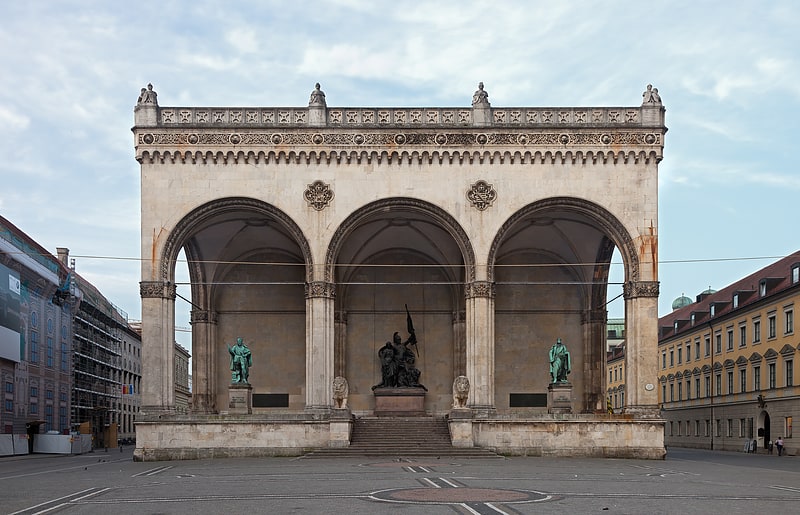
Bavarian army monument with lion statues. The Feldherrnhalle is a monumental loggia on the Odeonsplatz in Munich, Germany. Modelled after the Loggia dei Lanzi in Florence, it was commissioned in 1841 by King Ludwig I of Bavaria to honour the tradition of the Bavarian Army.
In 1923, it was the site of the brief battle that ended Hitler's Beer Hall Putsch. During the Nazi era, it served as a monument commemorating the death of 16 members of the Nazi party.[29]
Address: Theatinerstr. 38, 80333 München (Altstadt - Lehel)
Theatinerkirche
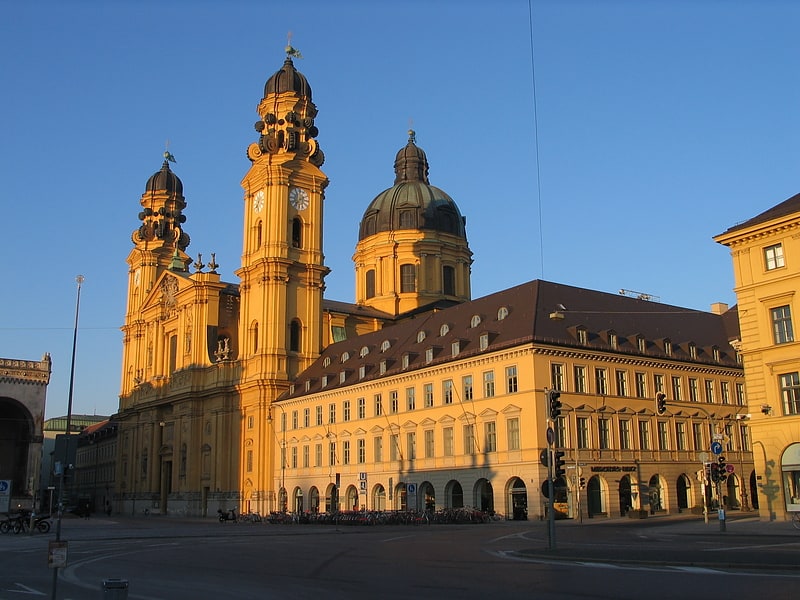
Stucco interiors in baroque 1660s church. The Theatine Church of St. Cajetan is a Catholic church in Munich, southern Germany. Built from 1663 to 1690, it was founded by Elector Ferdinand Maria and his wife, Henriette Adelaide of Savoy, as a gesture of thanks for the birth of the long-awaited heir to the Bavarian crown, Prince Max Emanuel, in 1662. Now administered by the Dominican Friars, it is also known as the Dominican Priory of St. Cajetan.
The church was built in Italian high-Baroque style, inspired by Sant'Andrea della Valle in Rome, designed by the Italian architect Agostino Barelli. His successor, Enrico Zuccalli, added two 66 meters high towers, originally not planned, and then finished the 71-metre-high (233 ft) dome in 1690. The church is 72 metres (236 ft) long and 15.5 metres (51 ft) wide. The facade in Rococo style was completed only in 1768 by François de Cuvilliés. Its Mediterranean appearance and yellow coloring became a well known symbol for the city and had much influence on Southern German Baroque architecture.[30]
Address: Salvatorplatz 2A, 80333 München (Altstadt - Lehel)
Bayerisches Nationalmuseum

National museum with huge collections. The Bavarian National Museum in Munich is one of the most important museums of decorative arts in Europe and one of the largest art museums in Germany. Since the beginning the collection has been divided into two main groups: the art historical collection and the folklore collection.[31]
Address: Prinzregentenstraße 3, 80538 München (Altstadt - Lehel)
Siegestor
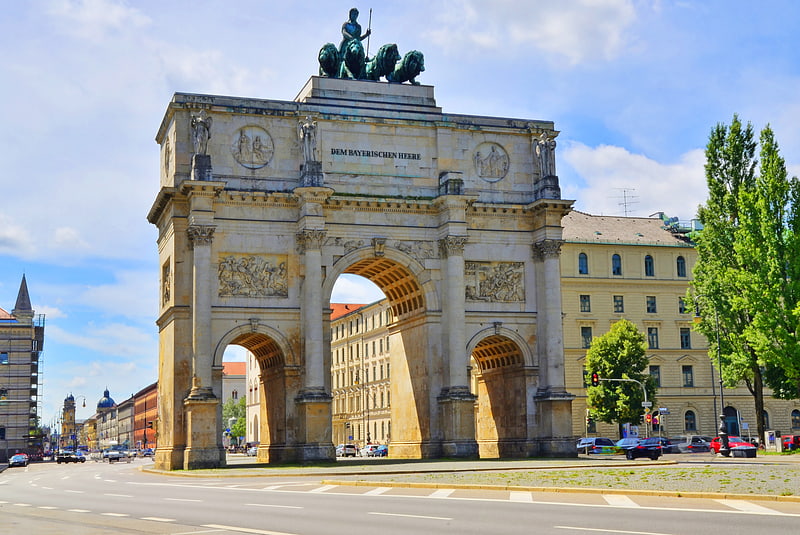
Historic triumphal arch with statues. The Siegestor in Munich is a three-arched memorial arch, crowned with a statue of Bavaria with a lion-quadriga. The monument was originally dedicated to the glory of the Bavarian army. Since its restoration following World War II, it now stands as a reminder to peace.
The Siegestor is 21 meters high, 24 m wide, and 12 m deep. It is located between the Ludwig Maximilian University and the Ohmstraße, where the Ludwigstraße (south) ends and the Leopoldstraße (north) begins. It thus sits at the boundary between the two Munich districts of Maxvorstadt and Schwabing.[32]
Address: Leopoldstrasse 1, 80539 Munich (Maxvorstadt)
Haus der Kunst
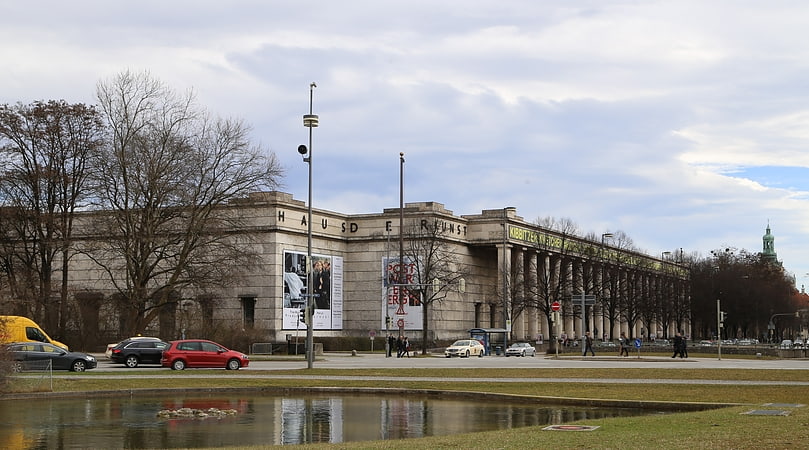
Contemporary art exhibitions and research. The Haus der Kunst is a non-collecting modern and contemporary art museum in Munich, Germany. It is located at Prinzregentenstraße 1 at the southern edge of the Englischer Garten, Munich's largest park.[33]
Address: Prinzregentenstraße 1, 80538 München (Maxvorstadt)
Hofgarten
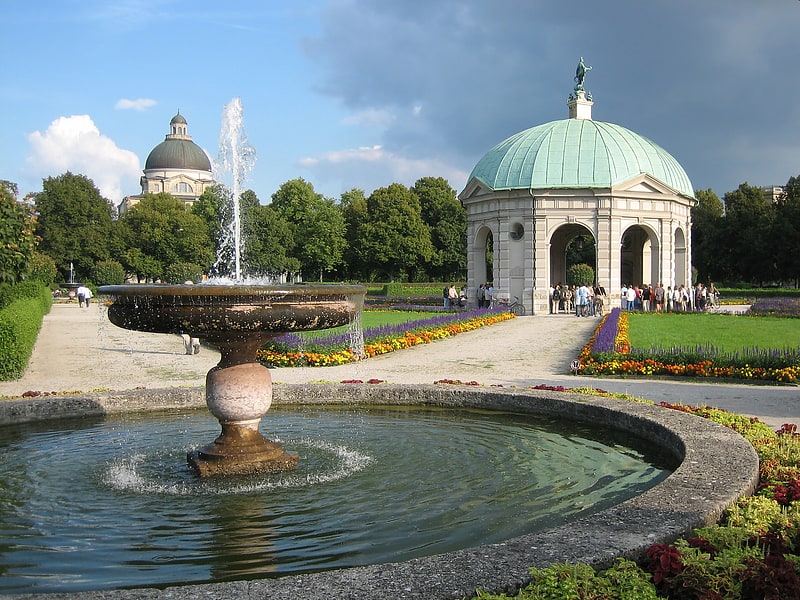
17th-century Italian Renaissance gardens. The Hofgarten is a garden in the center of Munich, Germany, located between the Residenz and the Englischer Garten.[34]
Augustiner-Keller
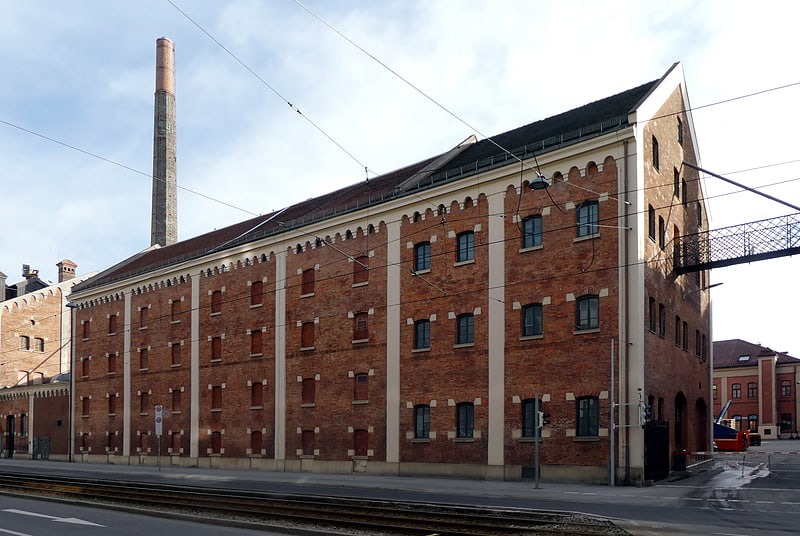
Also known as: Augustiner-Bräu
Augustiner-Bräu is a brewery in Munich, Germany. Established in 1328, it is Munich's oldest independent brewery. The company is owned by the Edith Haberland Wagner Trust 51% and the Inselkammer-Family 49%.[35]
Address: Arnulfstraße 52, 80335 München (Maxvorstadt)